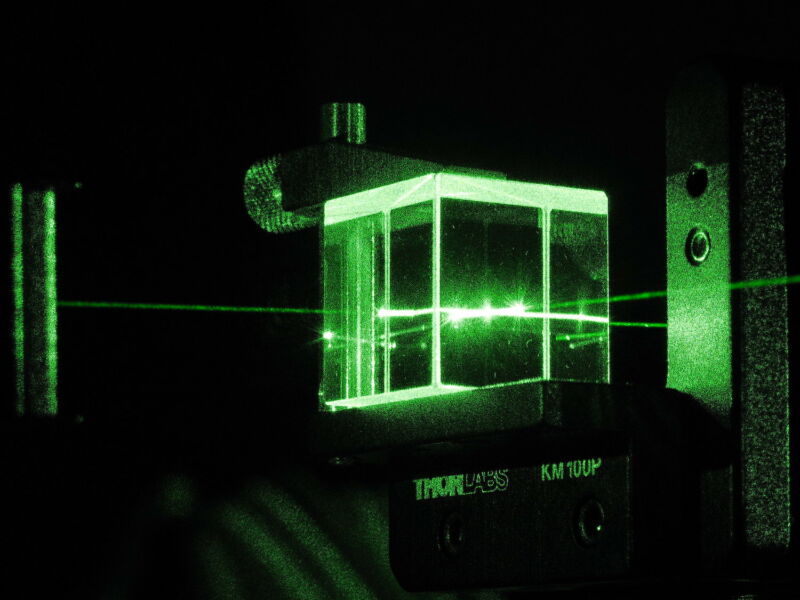
Enlarge / One beam enters, two beams leave. (credit: Melissa Meister / Flickr)
I am a great believer in solving problems with lasers. Are you suffering from a severely polarized society and a fast-growing population living below the poverty line? Well, I have the laser to solve all your problems.
OK, maybe not. But when it comes to quantum computing, I am of the belief that lasers are the future. I suspect that the current architectures are akin to the Colossus or the ENIAC: they are breakthroughs in their own right, but they are not the future. My admittedly biased opinion is that the future is optical. A new paper provides my opinion some support, demonstrating solutions to a mind-boggling 1030 problem space using a quantum optical system. Unfortunately, the support is a little more limited than I'd like, as it is a rather limited breakthrough.
Photons flipping coins
The researchers have demonstrated something called a Gaussian boson sampling system. This is essentially a device designed to solve a single type of problem. It's based on devices called "beam splitters," so let's start with a closer look at how those work.
No comments:
Post a Comment